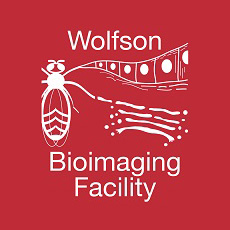If you would like to amend an existing facility already listed on this page, please email Jess Cole.
Facility Submission Form
Contact the Office
View EU Facilities
- Austria - Austria Bioimaging
- Czech - Czech Bioimaging
- Denmark - Danish Molecular Biomedical Imaging Center
- Finland - Finish National Infrastructure Network
- Germany - German Bioimaging
- Ireland - Imaging Platform Ireland
- Italy - Italy Bioimaging
- Netherlands - Nl-BioImaging AM
- Portugal - Portuguese Platform of BioImaging (PPBI)
- Spain - Spanish bioimaging network (REMOA)
- Sweden - Swedish Bioimaging
- Switzerland - Swiss Bioimaging
- For further information visit the EuroBioimaging website
- America - Microscopy Society of America
-
Aberdeen University Microscopy and Histology Core Facility
Location Aberdeen
The Microscopy and Histology Core Facility is based in the Institute of Medical Sciences at the University of Aberdeen. We are pleased to welcome all users with all levels of experience in microscopy and/or histology from the university and also visiting scientists from other faculties, universities and hospitals. We have a wide variety of equipment available for use and staff members with many years of experience who are happy to help.
-
Aberystwyth University Advanced Microscopy and Bio-imaging Laboratory
Location Aberystwyth, Ceredigion
The current Advanced Microscopy and Bio-imaging Laboratory was established in 2002. It is based in the refurbished Electron Microscope Facility which has been in existence since the mid 1960's and is located on the ground floor of the Edward Llwyd Building on Penglais Campus.
-
ACEMAC (Aberdeen Centre for Electron Microscopy, Analysis and Characterisation)
Location Aberdeen
CarlZeiss GeminiSEM 300 VP with Deben Centaurus CL and Oxford Instruments EDS (XMax80) and EBSD (NordlysNano), plus sample preparation facilities and technical support for physical and material sciences as well as biosciences
-
Advanced BioImaging Facility (ABIF)
Location Quebec
The ABIF offers 12 light microscopes ranging from widefield to lattice light sheet imaging. Tremendous expertise, in-depth one-on-one training, comprehensive consultations, sample preparation advice, ongoing support, image processing, image analysis and preparation of data for publication. The facility has expertise in live cell imaging, quantitative imaging, FRAP, FLIM, FRET, FCS, TIRF, spectral imaging, high content screening, quantitative customized image analysis.
-
Advanced Bioimaging Research Technology Platform
Location Coventry
The Advanced Bioimaging Research Technology Platform performs electron microscopy on a wide range of samples, from purified protein to tissue sections. We are accessible to users within Warwick, as well as external users from higher education and industry. We have extensive expertise in cryo-TEM of vesicles and polymer assemblies.
-
Advanced Imaging Core Facility
Location Doha
The Advanced Imaging Core (AIC) is focused on supporting advanced research in biomedical imaging and precision medicine. The centre provides access to a range of world-class optical microscopes that covers a wide range of applications as well as image processing software for further processing. Consultation on protocol design, sample preparation, and labelling procedures is also provided. The core facility also welcomes projects on a collaborative basis.
-
Advanced Imaging core technology unit - Queen's University Belfast
Location Belfast
Advanced imaging Unit provides professional services related to the optic and electron microscopy and image processing to internal and external researchers. Advanced imaging instruments can visualize fixed , live tissue, semiconductors, polymers, nanoparticles or nanocomposites. Image analysis using software’s equipped with artificial intelligence algorithms and high-performance computers are available in the unit to accurately quantify recorded images.
-
Advanced Imaging Facility
Location Leicester
The advanced Imaging Facility is the light microscopy facility within the University of Leicester’s College of Life Sciences and offers access to a wide range of light microscopes (widefield, confocals, Quantitative Phase Imaging, super-resolution, TIRF, slide scanning) as well as support for image analysis (including Imaris, Huygens, Fiji). The facility is available to staff, students, external researchers and Industry.
-
Advanced Light Microscopy Core (ALM)
Location Hershey
The Advanced Light Microscopy Core at Penn State College of Medicine offers consultation and training for fluorescence imaging and bioimage analysis. Our confocal, super-resolution (STED), light-sheet, and widefield microscopes allow for imaging samples at multiple scales. Image analysis workstations with Imaris and Huygens are excellent tools for image processing, analysis, and visualization. Non-Penn State users are welcome!
-
Advanced Microscopy Facility, WT-MRC Stem Cell Institute
Location Cambridge
Core Imaging Facility serving the Cambridge Stem Cell Institute
-
Advanced Microscopy Laboratory
Location Dublin
The Advanced Microscopy Laboratory (AML) is part of the CRANN Institute and is a custom designed, 6,000 square foot facility, located in the Trinity Technology and Enterprise Campus. The AML contains a suite of instruments that covers the entire resolution range from transmission electron microscopy, electron energy loss and energy-dispersive X-ray spectroscopies with spatial resolution up to the atomic scale, to scanning electron and ion beam microscopes for surface imaging and analysis.
-
AIM Facility
Location Swansea
A scientific imaging and characterisation facility integrating and correlating data from optical, electron and X-ray techniques.
-
ASCUS Lab
Location Edinburgh
The ASCUS Lab is a non-profit, publicly accessible, biosafety level 1 art-science lab. We invite artists, scientists and members of the general public to get hands-on with with the tools of science and art through DIY experimenting and microscopy. The lab is accessible to anyone no matter your level of experience; we offer training for beginners, tailored project support and offer art-science workshops. We are also experienced in developing and delivering hands-on public engagement events.
-
Astbury Biostructure Laboratory (Electron Microscopy, University of Leeds)
Location Leeds
Electron microscopy facilities at the University of Leeds include state-of-the-art transmission electron microscopes equipped with direct electron detectors. We offer access to researchers across the University of Leeds, as well as their academic and industrial partners. We can also offer non collaborative access to academic and industrial users, please get in touch for more information.
-
Atomic Force Microscopy Service at IMDEA Nanoscience
Location Madrid
The Atomic Force Microscopy Service at IMDEA Nanoscience (Madrid, Spain) provides access to several atomic force microscopes for structural, mechanical, electric or magnetic characterization with nanometric resolution on very different materials (metals, polymers, biological, etc). This scientific-technological facility offers an advanced, multidisciplinary and dynamic support to research groups and private institutions.
-
Babraham Institute Flow Cytometry Core Facility
Location Cambridge
The Babraham Institute Flow Cytometry Core Facility offers high quality service and state-of-the-art instrumentation to members of Babraham Institute and external users
-
Babraham Institute Imaging Facility (Cambridge)
Location Cambridge
The BI Imaging Facility provides a wide range of services relating to light and electron microscopy (EM). We offer supported access to cutting-edge imaging technologies including various fluorescence modalities and a full workflow for volume EM. We provide training with tissue sectioning tools and have a dedicated image analyst to guide users on reliable image quantification. All of our equipment and services are available to external users. Please visit our internet pages for full details.
-
Bath University Imaging Facility
Location Bath
The University of Bath Imaging Facility enable users to image samples in a variety of ways. Our services span bioimaging, flow cytometry, electron microscopy, molecular spectroscopy and metrology.
-
BCAST
Location Uxbridge
BCAST is a research centre with research spanning fundamental science associated with solidification and physical metallurgy, casting, alloy and process development, and industrialisation. The Characterisation Centre of BCAST hosts: Cs-corrected TEM, 3D APT, SEM, TEM, Optical microscopy and X-ray (XRD and CT). The main research looks at structure property relationships of metallic materials. Due to the specialist nature of the facility, we welcome work from industrial and research stakeholders.
-
Beatson Advanced Imaging Resource (BAIR)
Location Glasgow
Beatson Advanced Imaging Resource scientists work closely with researchers to uncover and interrogate important molecular pathways in cancer. We train scientists in all stages of modern microscopical research from advice on experimental design and sample preparation, basic and advanced microscope operation and data acquisition through to quantitative image analysis and interpretation.
-
Bioimaging at The Pirbright Institute
Location Surrey
The Pirbright Institute is a national virus research facility specifically designed for the study and diagnosis of veterinary and zoonotic pathogens which are exotic to the UK. We have a vibrant Bioimaging department housing state-of-the-art confocal, superresolution and electron microscopes located within a high containment envelope. Together with the expert staff these instruments provide a cutting edge facility available to internal and external researchers.
-
Bioimaging Facility - Durham University Biosciences
Location Durham
The facility has experience working with a variety of sample types with particular expertise with plant samples. As well as academic project support, the facility has a strength in industrial research collaborations and method development for these partners.
-
BioImaging Facility - John Innes Centre
Location Norwich
The JIC Bioimaging facility is a well-equipped light and electron microscopy unit. Its dedicated team has many decades of imaging experience. This accessible expertise enables a fast-track consultative approach to experimental design/method development, thus maximising the chances of early success and optimising results quality. Although the primary research focus at JIC is plant science related, the team welcomes enquiries from anyone interested in using the imaging facilities.
-
Bioimaging Facility, University of Manchester
Location Manchester
The Bioimaging Facility offers access to light microscope systems to users from across the University of Manchester and further afield. We provide help and advice form experiment design and image acquisition through to data analysis and presentation. The Bioimaging Facility has three full time members of staff that are responsible for user training, continued advice and maintenance of the systems. Outside users receive the same level of access and support as our internal users.
-
Biomedical Imaging Unit, Southampton
Location Southampton
The Biomedical Imaging Unit, is a joint University Hospitals Southampton NHS Foundation Trust (UHS)/University of Southampton (UoS) facility for high quality/high resolution diagnostic and research microscopy. Accredited under UKAS to ISO 15189, this core facility carries out research work for UoS, other universities and research institutes, industry and artists, together with diagnostic microscopy for UHS, and other hospitals both nationally and internationally.
-
Biomedicum Imaging Unit
Location Helsinki
Biomedicum Imaging Unit (BIU) is a core facility that provides services for your biomedical optical imaging needs ranging from designing the experiment to the analysis of the results. BIU is part of the Helsinki BioImaging (HBI) and Helsinki in vivo animal imaging (HAIP) platforms of the Helsinki Institute of Life Science (HiLIFE). Our services are available for all local, national, and international customers – both from academia and companies.
-
Blizard Advanced Light Microscopy (BALM)
Location London
BALM provides high-tech multi-million pound advanced imaging technology. Using the equipment in BALM you will be able to observe, record and analyse your experiments obtaining picture perfect images and cutting-edge scientific insights. We provide a broad range of equipment and services to suit everyone from experienced light microscopy specialists, to people who have never touched a microscope before. In BALM you will both find the right tools, guidance and friendly support to get the results
-
Bridge, University of Lincoln
Location Lincoln
Bridge at the University of Lincoln has a range of OM, AFM, and EM facilities. We have Zeiss AxioImager light microscope, four different AFMs, a FEG FIB-SEM, and a 200kV materials scanning/transmission electron microscope. The centre focusses on materials engineering challenges from industrial clients.
-
Bristol University Wolfson Bioimaging Facility
Location Bristol
The Wolfson Bioimaging Facility provides microscopy support for researchers across Bristol University and beyond. A broad range of fluorescence imaging systems are positioned alongside high specification electron microscopes. Expert support is provided for preparation, imaging and analysis. The fully integrated nature of the facility allows us to combine multiple imaging modalities, including correlative microscopy.
-
Cambridge Advanced Imaging Centre
Location University of Cambridge
The Cambridge Advanced Imaging Centre combines core imaging facilities with an advanced technology development capability. The centre offers both advanced electron and light microscopy services and is open to internal and external users. Staff in the centre have diverse expertise from physics to computer science and cell biology.




























